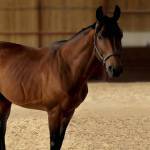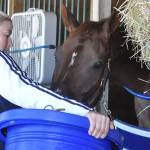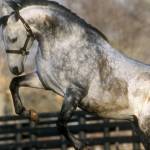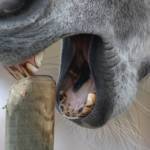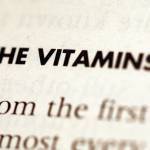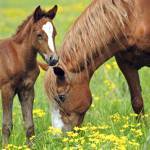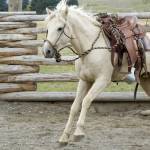Feeding Horses at the Olympics
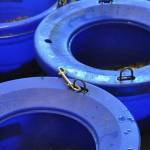
While much of the world focused on the Olympic Games in Beijing, the equestrian portion of the competition was taking place 1900 kilometres south in Hong Kong. Hong Kong was chosen as the equestrian venue because of quarantine issues related to importation of horses into Beijing. The 2008 Games were the fourth consecutive Olympics in which Kentucky Equine Research (KER) played a major role in the supply of feed, forage, and bedding, either as nutrition adviser (Sydney 2000) or as official supplier (Atlanta 1996, Athens 2004, Hong Kong 2008). These experiences have led to some interesting observations about how elite sport horses are fed and managed at the highest level of the game.
Olympic equestrian competitions are fairly small compared to many other international events held around the world. This year 217 dressage, show jumping, and three-day event horses representing 42 countries traveled to Hong Kong. Many countries such as the U.S., Australia, Germany, Great Britain, and Sweden fielded full teams of 14 horses (three dressage horses and one reserve; four jumpers and one reserve; and five eventers), while a number of nations such as Azerbaijan, Bermuda, Czech Republic, and the United Arab Emirates sent only a single horse and rider.
The type of horse used for each discipline varied considerably as did their feeding programs. Olympic dressage horses tend to be large, well-conditioned Warmbloods. These types of horses are typically fed lower energy- density feeds in an attempt to reduce excitability that is believed to be related to high carbohydrate intake. Three-day event horses are generally lighter horses with a large proportion of Thoroughbred breeding. Since their levels of exercise and energy requirements are greater, they tend to favor more energy dense feeds. In many instances, these horses have more difficulty maintaining body condition.
Olympic show jumpers are intermediate in body size, body condition, and energy requirement. They are typically the most widely traveled and adaptable to both new environments and new feeding programs.
The majority of the horses competing at the Olympics spend a great deal of their time competing in Europe, where they are fed a wide variety of feeds and forages. KER’s challenge as official Olympic supplier is to provide feed, forage, and bedding that is acceptable to the competitors and that meets the nutritional requirements of the horses under the environmental conditions present at the venue.
The geographic location of each Olympic Games dictates the specific challenges facing the feeding and management of the horses. Before the 1996 Olympics were held in Atlanta, Georgia, the greatest concern centered on how heat and humidity would affect the horses because the competition took place in the middle of summer when the weather can be quite hot. Before those Games a large research initiative was undertaken at universities around the world in order to learn how to better manage competition horses in hot climates. Using management techniques developed from this research, the teams successfully dealt with the climate at the 1996 Olympics.
When the Games shifted to Australia in 2000, heat and humidity was not a concern, but transport stress became a major challenge because most of the horses competing were shipped great distances. The Olympics returned to Europe in 2004 when they were held in Athens, Greece. Transport was not a huge concern and while Greece was hot, it was not humid. In hot, dry environments horses efficiently dissipate heat by sweating.
Hong Kong represented a double-barreled challenge. First, most of the horses competing traveled by air more than 5000 miles from Europe. Second, the climate in Hong Kong during August is very hot and humid with temperatures reaching over 32°C and 90% humidity. The combination of travel stress and a rapid diet change often leads to colic in horses.
To reduce the likelihood of this occurring in Hong Kong, KER supplied hay to horses while they were in quarantine in Europe. The same hay was then fed at the Olympic venue, so horses had several days in which to become accustomed to the forage.
The stables at the Sha Tin Olympic Equestrian Venue in Hong Kong were constructed by the Hong Kong Jockey Club. Thoroughbred racing is extremely popular in Hong Kong, and a community of about 1200 racehorses train year-round in stabling adjacent to the Olympic venue. The racehorses live in air-conditioned stables, and they experience very few problems related to heat stress. This technology was adopted for the Olympic stabling, and it proved to be quite successful.
A number of competitors remarked how quickly and easily their horses settled into this stable environment. Of course, when the horses left the stables to train or compete, they sweated profusely since this is the horse’s main mechanism to dissipate heat. Horse sweat is very high in electrolyte content and replacement of these key minerals is critical. KER provided two types of electrolytes for this competition. One was a powdered formula, known in Australia as KER Restore, that mimics the composition of horse sweat. This electrolyte was fed throughout training to replace sweat losses. The second was a paste electrolyte that was specifically formulated as a pre-competition loading dose. KER research conducted before the Olympics showed that this type of preloading electrolyte stimulated water intake and rehydration after exercise.
Forage quality is a major concern among Olympic competitors. KER has turned to Anderson Hay and Grain Company in Ellensburg, Washington as its hay supplier for the Olympics in Atlanta, Athens, and Hong Kong. Most Olympic horses eat grass hay and the Pacific Northwest produces arguably the best timothy hay in the world. KER has found that second cutting timothy has a desirable nutritional profile (10% protein, 34% ADF, 57% NDF) for performance horses and is extremely palatable. The only complaints that were lodged against this hay came from Europeans who worried that it was too rich because of its green color. In addition to timothy, a few competitors used lucerne hay, and ryegrass haylage was popular for some European horses.
Understandably, many competitors chose to bring their own compound feeds with them to the Olympics. For those that did not, KER supplied a menu of feeds suitable for horses competing in each discipline, including those in the Paralympics which immediately followed the conclusion of the Olympics. Equestrian Paralympic competition consists of dressage tests of varying difficulty depending on the level of disability of the rider. For these horses, calmness is a necessity, and their diets are typically quite low in energy density. Higher density formulas contained steam-flaked grains combined with fermentable fiber and fat.
To ensure freshness, the feed was transported to Hong Kong in refrigerated shipping containers. Extra mold inhibitor was also added to these formulas to prevent spoilage in Hong Kong’s hot, humid climate. This proved to be important since a number of European feeds that were brought by individual teams became moldy before the competition ended. Lower energy-density formulas containing added chaff were manufactured in Australia for KER by Ridley AgriProducts. Barastoc Cool Command, Calm Performer, and Completo were all popular choices for both the Olympic and Paralympic competitors.
As in Sydney and Athens, the Olympic horses consumed an incredible quantity of carrots in Hong Kong. More than eleven tons of fresh New Zealand and Australian carrots were fed over the course of the competition, averaging nearly 2.4 kg of carrots per horse per day! Since carrots are almost 90% water, this level of carrot intake actually contributes little towards meeting any nutrient requirements other than vitamin A (beta-carotene).
Although each of the Olympic competitions serviced by KER has had strengths and weaknesses, the overall scope and quality of the facilities in Hong Kong have set a new standard for future competitions. The 2012 Olympics will be held in London, where the organizers will have to do an outstanding job to outshine this year’s competition. My free piece of advice to them is don’t forget the carrots!

